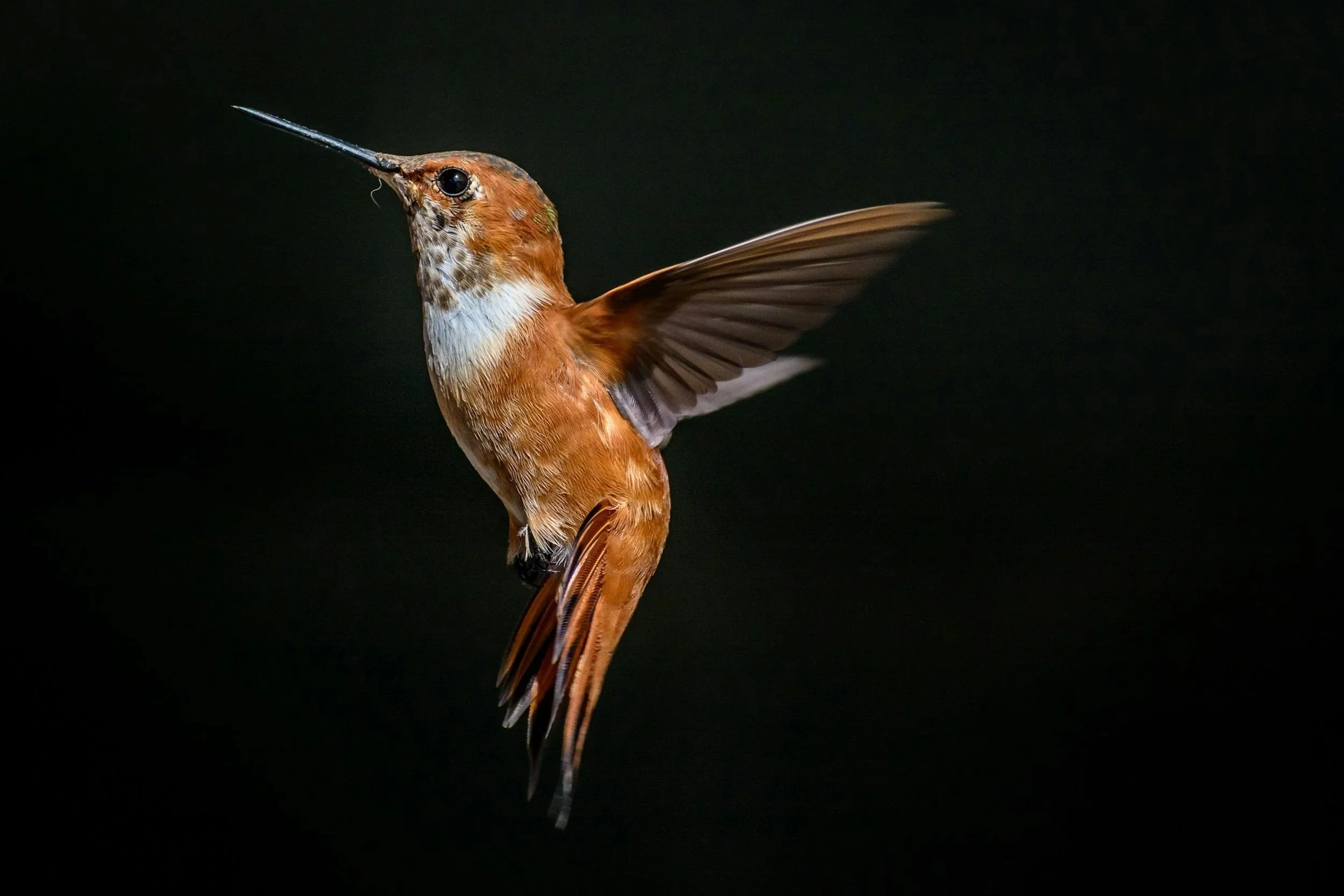The Hummingbird: Stuck in Flight (Fight and Freeze)
“There is a hummingbird trapped in our garage” my daughter informed me one afternoon.
I ran to see that she had already opened all the garage doors to set it free. While the space was wide open to the outside, the hummingbird seemed stuck inside.
The hummingbird was perched on some mental beams close to the ceiling of the garage. In an effort to escape, it kept flying up, and each time it did, it was obstructed by the ceiling. To escape, the hummingbird first needed to dip down below the upper lip of the garage door opening and then fly forward and out.
Let me be clear: My knowledge of the neurobiology, anatomy, and behavior of hummingbirds is non-existent. I am intrigued by them, but other than a level of awe and admiration, I have no true understanding of them. However, what I witnessed as the hummingbird frantically tried to escape the wide-open garage, echoed of something that felt curiously…human.
And I do know something about humans.
When we sense a threat, our sympathetic nervous system responds by reallocating energy away from higher-level cognitive processes and toward physiological preparation for action: heart rate is increased, blood flow is diverted to major muscle groups, digestion is slowed, and visual focused is sharpened, all to support our escape or defense. This is often referred to as the fight, flight, freeze response displayed across animal species; our nervous system prepares us to fight the predator, flee the scene, or freeze and play dead so the predator may bypass us.
The key here is the reallocation of energy away from higher-level cognitive process, i.e. reasoning, problem solving, and creativity.
The hummingbird was trapped — not by any real physical obstacle, but an internal one.
I’m speculating here, but the hummingbird seemed to be in a “flight” response, attempting to flee by repeatedly trying to fly up. While likely an adaptive escape effort in most natural cases of threat, flying up in this circumstance kept the hummingbird trapped. Being triggered into a singular threat response, the hummingbird could not assess the broader reality of the situation and did not “see” the wide-open doors beckoning for its escape.
When human beings are triggered into threat, we may equally sit trapped in a mental cage of our own making. With higher reasoning, creativity and problem solving off-line, we are unable to access broader possibilities and alternative ways of thinking and responding.
Why is all of this important? Because like the hummingbird, we can be triggered into a threat response whether the threat is a real physical threat or just perceived. The hummingbird was not really trapped.
Pulling from David Rock’s SCARF Model, for humans, perceived threat can include threats to our sense of Status, Certainty, Autonomy, Relatedness, and Fairness. So if we feel our importance, value or worth is at stake, if we feel a sense of unreliability and unpredictability, if we feel we lack control over ourselves or events in our lives, if our sense of connection or safety in relationships is at risk, or if we perceive our environment or situation as unjust or unfair, our bodies might experience these as threats in the same way as if a sabretooth tiger was trying to chase us down.
That’s a whole lot of threat. Especially given the context of our lives today.
And threat (real or perceived) triggers us, restricting our potential.
In the cases of perceived threat, flight might look like avoidance, distraction or withdrawing. Fight might look like being irritable, blaming or snapping. Freeze may look like procrastination, being unable to respond, shutting down or feeling numb.
Sound familiar?
None of these responses allow us to show up in our lives as our best selves. We keep flying up into the ceiling; Panicked, stuck, going nowhere.
So, what is the answer?
I left the hummingbird struggling in the garage, thinking if I removed the perceived threat of my predatory presence, the beautiful bird could calm down and find its way out. And eventually, I guess it did. I returned about a bit later and it was gone.
Unlike the hummingbird, whose instinctual wiring is not easily overridden, humans have this magical ability to pause and reflect, to notice when we’re caught in a threat response. We can step back from our immediate reactions, re-engage our rational brain, and gently question whether the threat is, in fact, real—or whether it is a perceived threat shaped by the stores we tell ourselves, our perceptions, or fears.
In the beginning it can be hard to “catch” ourselves and know when we are triggered, but with time and practice, and slowing down, we can fine-tune our connection with ourselves; we notice the irritability and pause to ask ourselves, “hmmm…what is going on here? Why am I lashing out? What part of me feels threatened or unsafe?”
We move on to ask, “What am I not seeing? What else is possible here?”
In pause, we create space. With space, we create possibility.
So, we can practice the pause. Practices like mindfulness, grounding in the present though our five senses, or simply taking a deep breath with a long exhale, can help create pause and interrupt the threat response.
With each practice of pause, we move into a life more self-designed, less reactive.
We see our way out.


